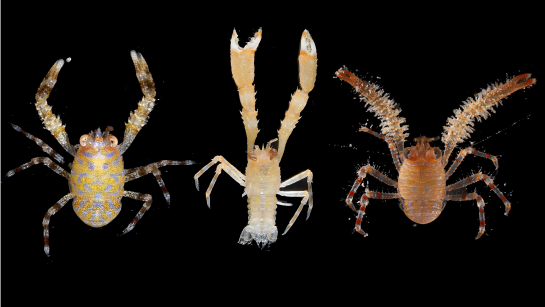Until recently, the genre phylladiorhynchus slime contained a total of eleven species of galatids (or lobsters), all present in shallow waters and on the continental shelf of the Indian and Pacific oceans. However, recent expeditions in these oceans have led to the collection of numerous new specimens that need to be analyzed.
Through an integrative approach that analyzes both morphological and molecular characters, researchers at the Blanes Center for Advanced Studies (CEAB-CSIC) and the National Museum of Natural Sciences (MNCN-CSIC) described 41 new species of these crustaceans in the magazine zootaxa. During the process, three old names were also resurrected: P. integrus, p.lenziY P. serrirostristhat in the past were wrongly considered similar to other species.
“When the species of a genus are reviewed, their entire related history should be studied, such as when and where they were described. For Phylladiorhynchus there were species considered as synonyms of another species with wide distribution. However, when we studied them in detail, we saw that they were different and valid, so we had to recover the names”, he explains to SINC Paula Rodriguez-Floresfirst author of the study.
The characteristics of lobsters
In the work, most of the new species of the genus are described and illustrated. Some are barely discernible on a morphological scale, but are very genetically divergentaccording to the researchers.
the kind of phylladiorhynchus are distinguished by various resources: the epigastric spines and lateral spines of the carapace, the shape and structure of the rostrum, the number and pattern of the carapace and pleon ridges (posterior region), etc. In addition, a dichotomous identification key for all 41 species is provided in the study.
Although these lobsters are of great interest from a biological point of view, the same is not true from a biological point of view. gastronomic perspective: “These species are very small, between 2 and 5 millimeters, so they are not of interest for consumption. In fact, they have an under-muscled abdomen and that is why they are not eaten,” says Rodríguez-Flores.
Several species of shrimp newly discovered in the study. / zootax
The challenges of taxonomic research
“To describe 41 species at once requires a very big effort. There are still unexplored areas of the world and it is estimated that nearly two-thirds of marine diversity remains undiscovered. Scientific expeditions in remote areas such as Papua New Guinea, French Polynesia, Madagascar, New Caledonia or American Samoa have been fundamental in this work”, says the researcher, who currently works at the Museum of Comparative Zoology at Harvard University.
In addition to the fundamental role of scientific collections that house materials from centuries ago and allow the comparison and study of differences between species, the sequencing of genetic markers It also greatly helped the authors of this work. This allowed them to identify species that are morphologically similar, but not genetically, so they can go unnoticed by the naked eye.
“Unfortunately, taxonomic work is not very appreciated in science, especially in Spain. We have little or no funding. It apparently has little impact, despite the fact that taxonomic knowledge is the basis of scientific research on biodiversity”, says Paula Rodríguez-Flores.
Reference:
Rodriguez-Flores, PC, Macpherson, E., & Machordom, A. (2021). Review of lobsters of the genus Phylladiorhynchus Baba, 1969 (Crustacea, Decapoda, Galatheidae) with the description of 41 new species. Zootaxa, 5008(1), 1-159.
